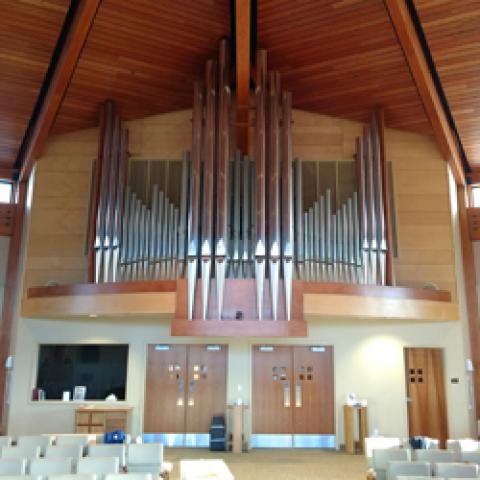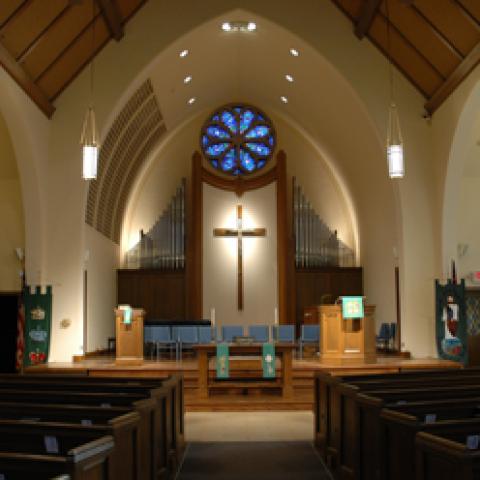
Berghaus Pipe Organ Builders and three generations of the Berghaus family hosted over 150 people at an open house on March 15, where guests enjoyed seeing the construction details of Berghaus’s latest instrument (two manuals, 34 ranks), which was installed at St. Benedict’s Church in Chesapeake, Virginia, in late April. The tongue-and-groove enclosures, slider chest and windline setup, façade, and console provided interesting opportunities for attendees of all ages and backgrounds to witness “behind-the-scenes” construction of a pipe organ.
Guests also explored facets of organ maintenance via interactive displays and demonstrations by Berghaus employees throughout the shop, including tonal finishing, releathering, and pipe repair.
Peterson Electro-Musical Products was on hand to demonstrate their wide variety of resources to musicians, who also were invited to play a fully functional five-rank Portativ instrument. The day ended with a recital by Jonathan Gregoire, a doctoral candidate in organ performance at Arizona State University, at Grace Lutheran Church in River Forest.
For information: http://www.berghausorgan.com.






